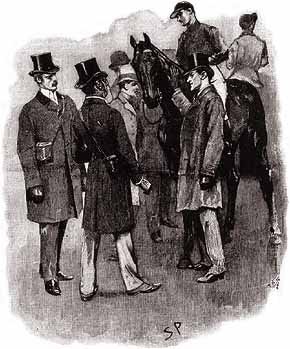Most clues are things we can see, or perceive through one of the other senses. Once we see them, we’re able to infer facts based on their presence. Absent clues, though, are a little different. They’re things we expect to see, but don’t. But, just like with clues that are actually present, absent clues allow us to infer facts about the case.
Most of the clue types can be absent. We expect to see a tangible item—but it’s not there. We expect to see a specific emotional reaction—but it’s not forthcoming. We expect a character to know some important piece of information—but they seem to lack that knowledge.
Absent Tangible Clues
Let’s talk about what is probably the most famous absent clue in mystery-writing history—the “curious incident of the dog in the nighttime” from the Sherlock Holmes story “The Adventure of Silver Blaze.” In this story, an unknown Villain has abducted a famous race horse, Silver Blaze, from his stall in the middle of the night. Suspicion initially focuses on a bookmaker named Fitzroy Simpson who has come to town specifically to gather information on Silver Blaze. But while there are a number of clues pointing in Simpson’s directions, there are also facts that just don’t fit with this version of events, including this one
Colonel Ross still wore an expression which showed the poor opinion which he had formed of my companion’s ability, but I saw by the Inspector’s face that his attention had been keenly aroused.
“You consider that to be important?” he asked.
“Exceedingly so.”
“Is there any point to which you would wish to draw my attention?”
“To the curious incident of the dog in the night-time.”
“The dog did nothing in the night-time.”
“That was the curious incident,” remarked Sherlock Holmes.
The dog didn’t bark—as it surely would have if Simpson, a man with whom it was not familiar, had entered the stable. Tangible clues, you remember, frequently help us establish links between characters and locations, objects, or other characters. In this case, the absence of a bark allows us to establish the absence of a link between the stable and Simpson (or, indeed, any character unknown to the dog).
But hang on. We know that some character was in the stable that night—someone led Silver Blaze from his stall. Since we know there’s no link between the stable and a character unknown to the dog, we can infer that there must be a link between the stable and a character who the dog did know.
Keep reading with a 7-day free trial
Subscribe to The Perfect Crime to keep reading this post and get 7 days of free access to the full post archives.





